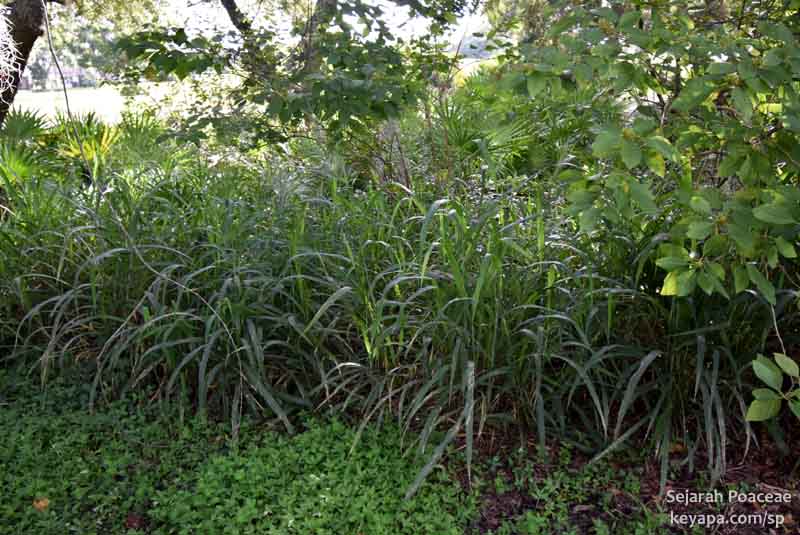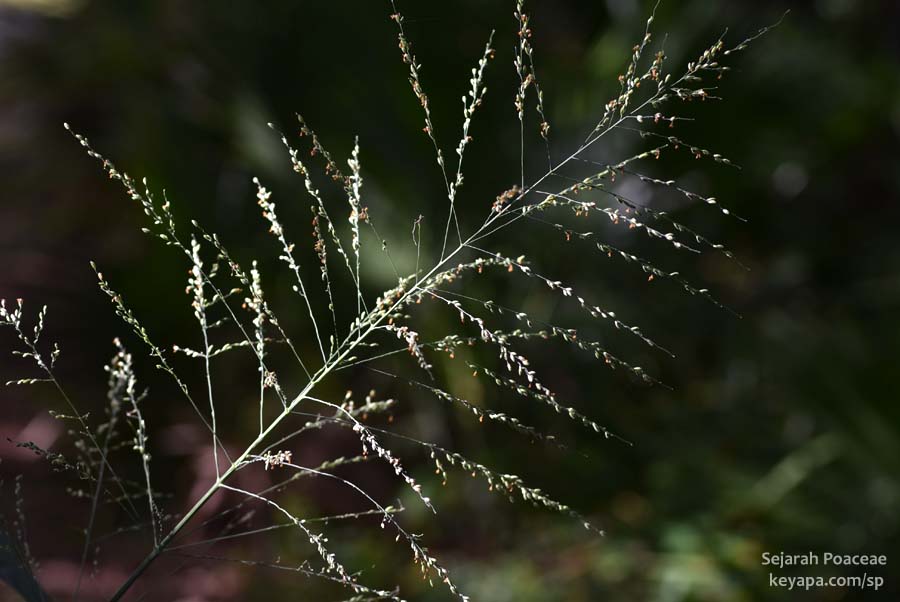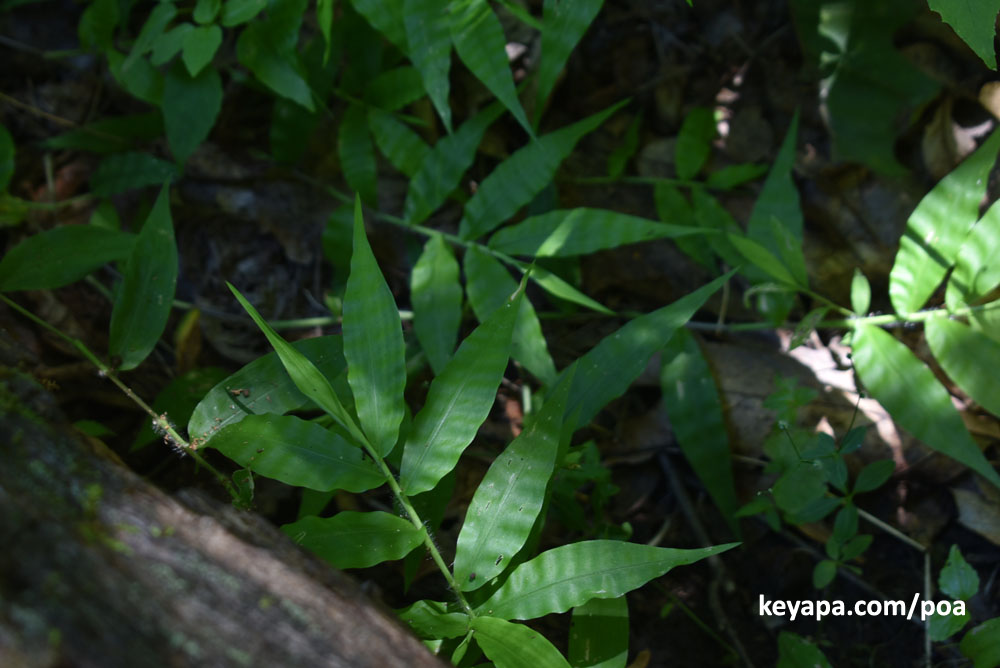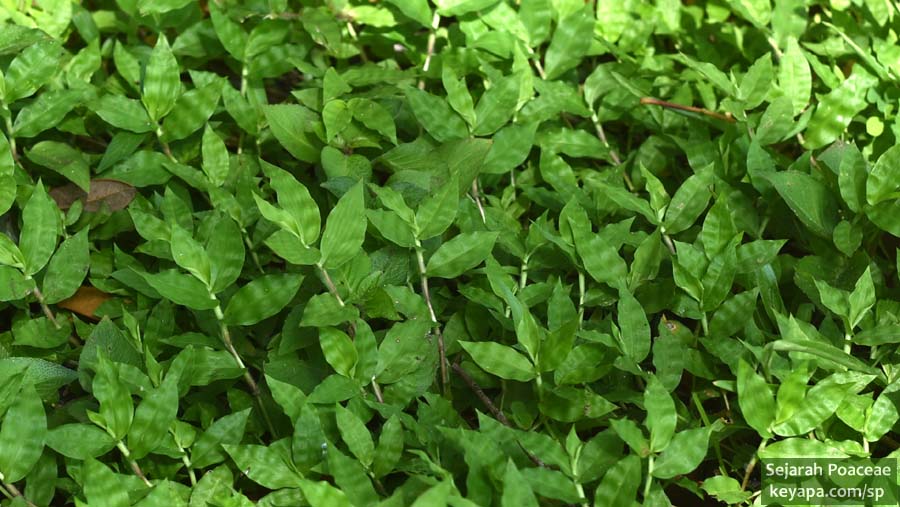
Important: I am in the process of getting a replacement, but unfortunately, due to damage to my flash during the hike at the Sherpa Steps or Nordkapptrappa (North Cape Staircase), in Honningsvåg, macrophotographs taken were of subpar quality, especially when lighting was low.
I was thinking that I’ve pretty much scoured my own community for interesting species in the three or so years that I’ve been here. The turf is a mixture of Paspalum notatum, Cynodon dactylon, Stenotaphrum secundatum, and perhaps some really low cut (and nice!) Agrostis sp in the golf courses, with ornamentals being mostly Trypsacum dactyloides, Muhlenbergia sp, and Cenchrus spp (fountain grasses). Plus, the usual invasives like Imperata cylindrica. But last week I was surprised to discover two new species of grasses that had been hiding in plain sight.
I had been passing by the pickleball courts (yes, we have that bane of current culture) when I decided to go through a somewhat shaded path that I thought was normally reserved for the multitudes of golf carts that littered the place (I also did not go through that a lot because of the presence of mosquitoes).

Imagine my surprise when I saw a cluster of Megathyrsus maximus (locally called Guinea grass) hidden under a large oak tree amongst the surrounding saw palmettos (Serenoa repens). The species is shade tolerant, and it was quietly encircling the tree area, with some culms throwing up pretty flowerheads.

This species has been spread around the subtropical and tropical regions of the world due to its palatability to herbivores, and in many places it has become notorious as a very flammable weed. I remember watching the TV series Lost awhile back and being astonished as to how many times the critter showed up in scenes (Lost was shot mainly in Hawaii).

I’ve also seen this species in some Caribbean islands that I’ve visited, but this is the first time I’ve seen this species in the community. Perhaps the equally dominant I. cylindrica that is a fixture of the area has been excluding M. maximus. It generally is also larger than I. cylindrica, so perhaps the gardeners have been more vigilant against it. Whatever the case, seeing it was a somewhat pleasant surprise.
But the better surprise for me was when I looked down on the grasses that I was stepping on while taking pics of M. maximus. I must have done a back flip because I saw what looked like another species that I had last seen much farther up north.

Several years ago, I encountered one of the newest invasives in shaded temperate areas of the USA. Oplismenus undulatifolius (Wavyleaf Basketgrass) is a very pretty species that has been slowly invading shaded environments, and finding it and writing about it had been one of the highlights of my botanizing awhile back.
How an Invasive Grass Secretly Spread and Eluded Eradication
Oplismenus undulatifolius at Patapsco Valley State Park (Avalon Area)
In search of a new forest invasive : Oplismenus undulatifolius (Wavyleaf Basketgrass)

The undergrowth below the M. maximus and S. repens was a mixture of weeds, but dominated by a grass that had somewhat wavy leaves. I got on my hands and knees and examined the new discovery, taking photographs for later review (not an easy thing since my flash is still missing in action, and I was trying to use a handheld LED), and I immediately noticed some differences between it and what I remember about O. undulatifolius. The leaves seemed to be smaller and definitely more rounded.

I tagged it later as Oplismenus burmannii, which is not native to Florida, but an import from Africa. This annual species intrigued me, as grasses in general tend not to be too happy under shade. But like other Oplismenus species, the O. burmannii seemed to be quite content under the oak tree, the pretty leaves hugging the ground and spreading around large obstructions.
I hunted around for any inflorescence, because finding one would nail the identification. There is some confusion as to the actual specifics from the sources I found online, but it seems this particular species has stigmas and awns that look quite different from the other nearby perennial Oplismenus spp (O. hirtellus and O. setarius). I could not find any, but resolved to continue periodically visiting the patch to make sure i do catch them when they finally emerge.
Whatever the final tag, finding it was quite interesting. There are not a lot of grass species that tolerate strong shade, and certainly not many that have such pretty leaves. This just goes to show that I can still be surprised in places that i have explored for years!

Leave a Reply